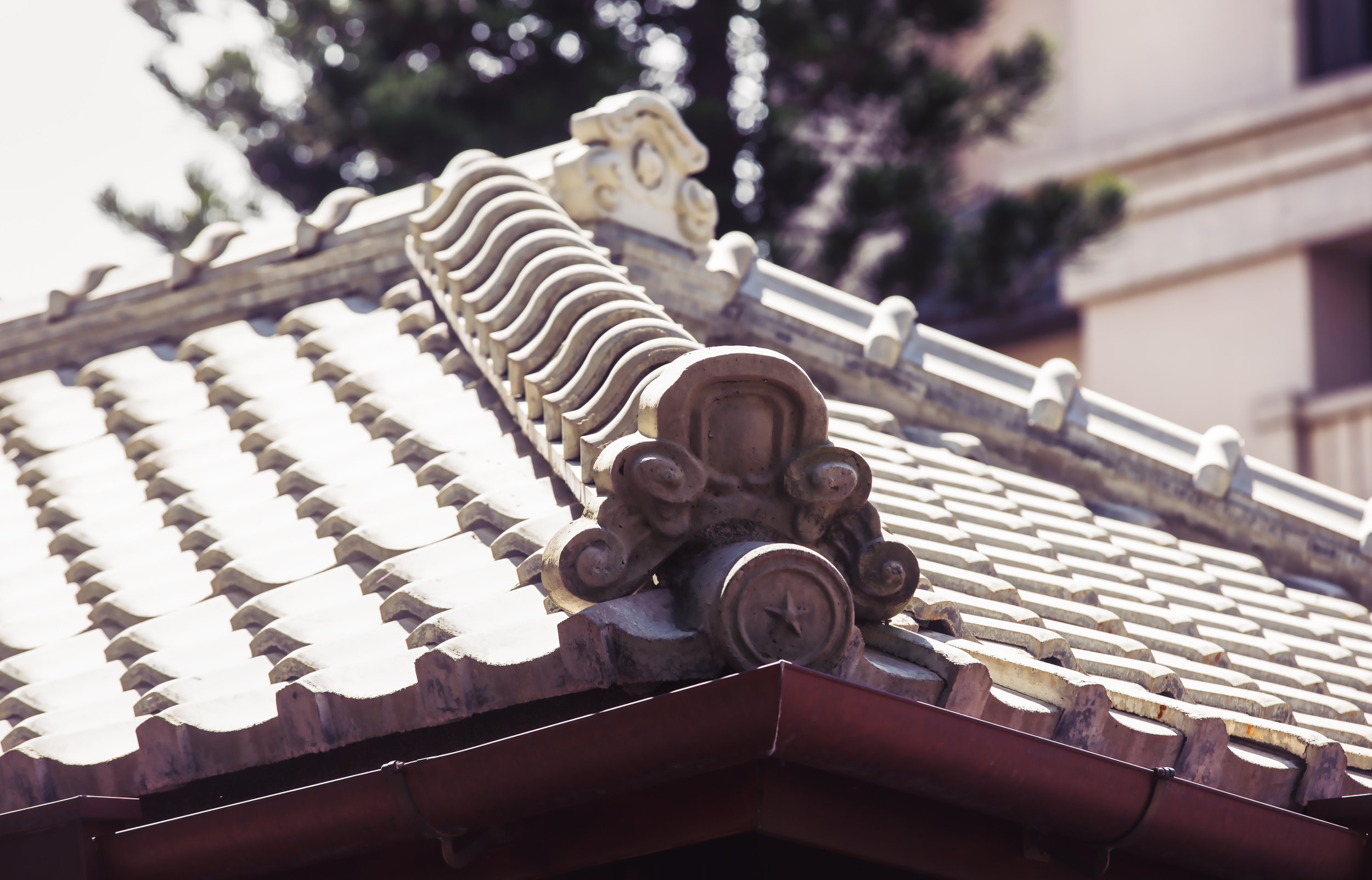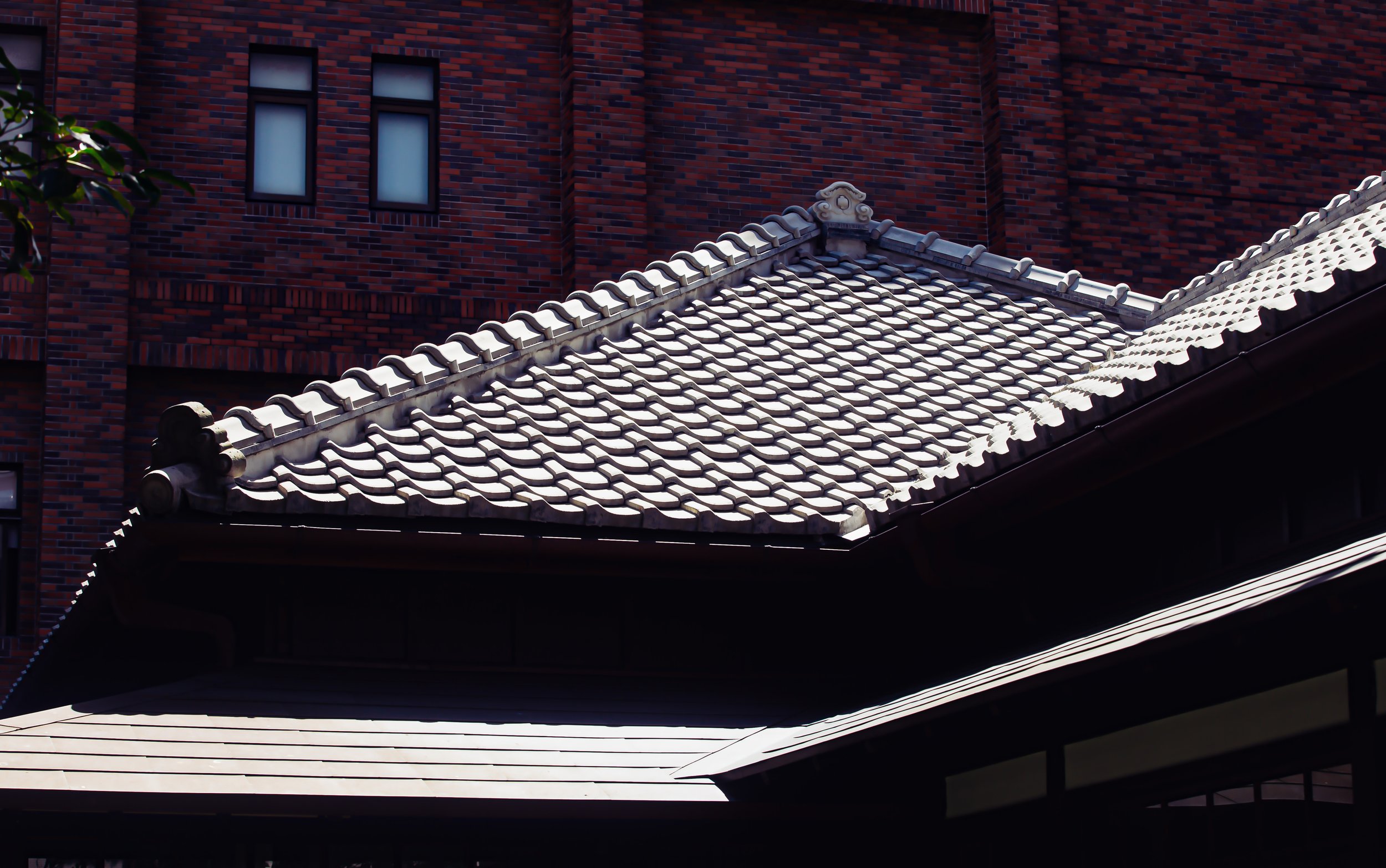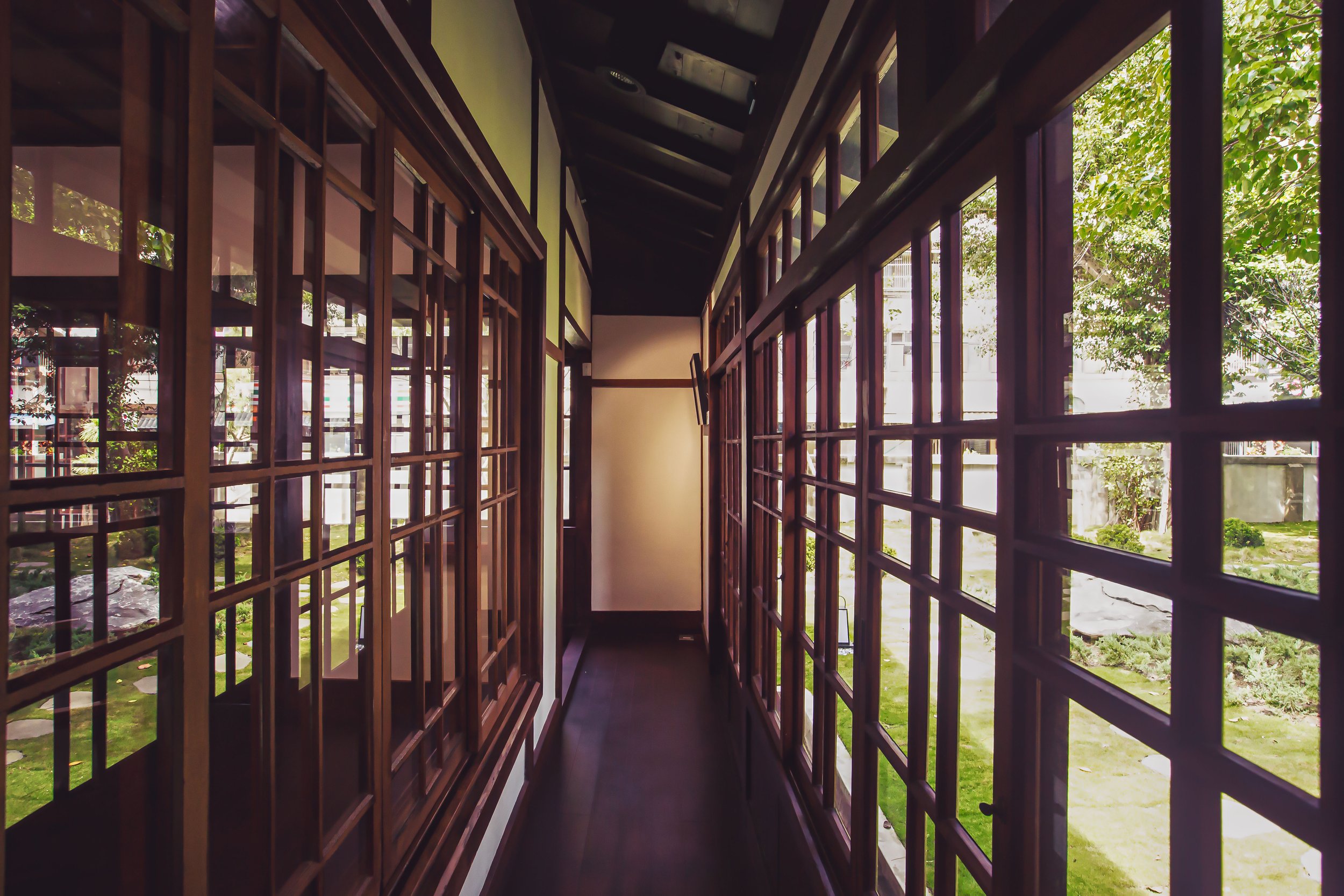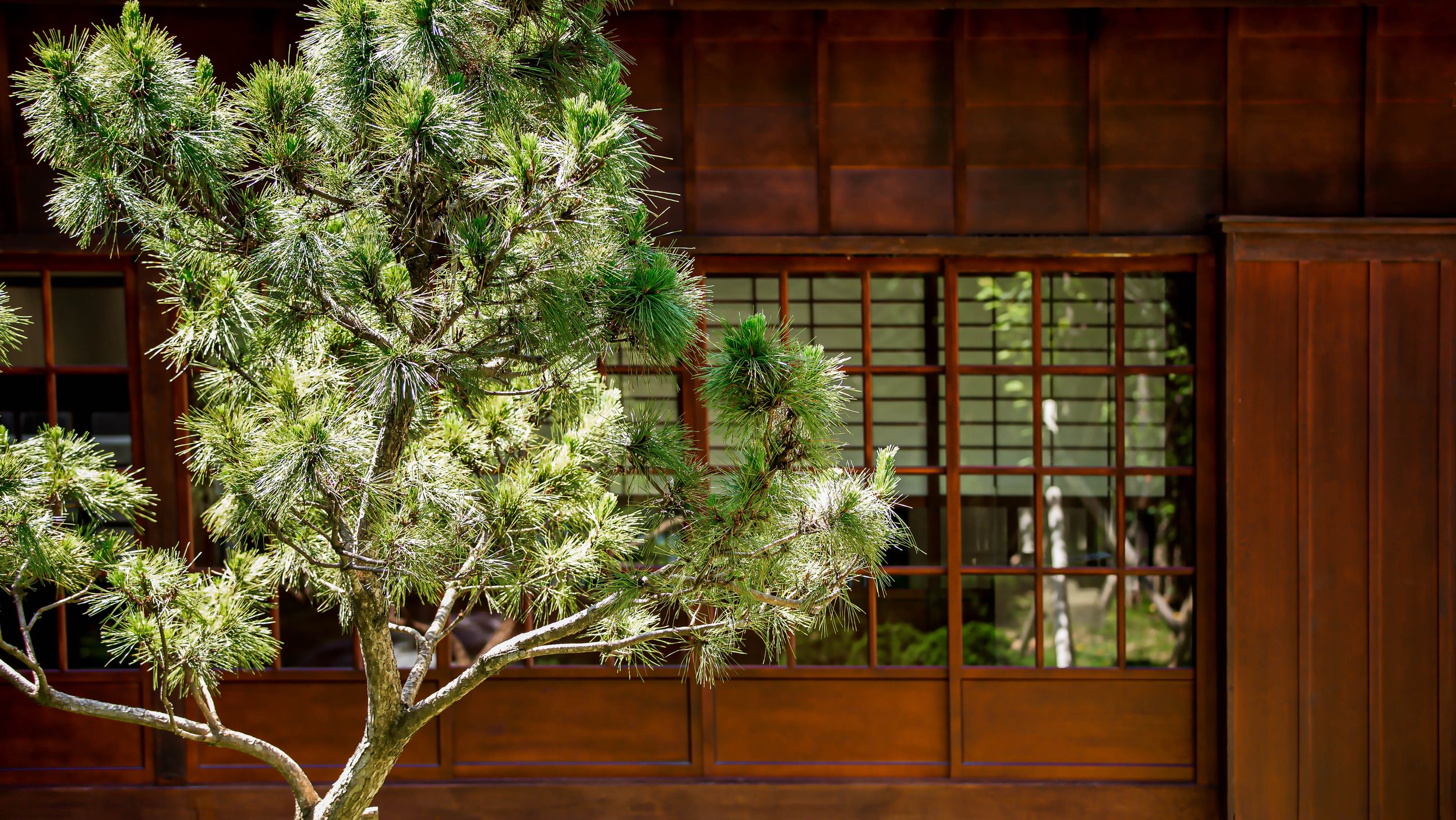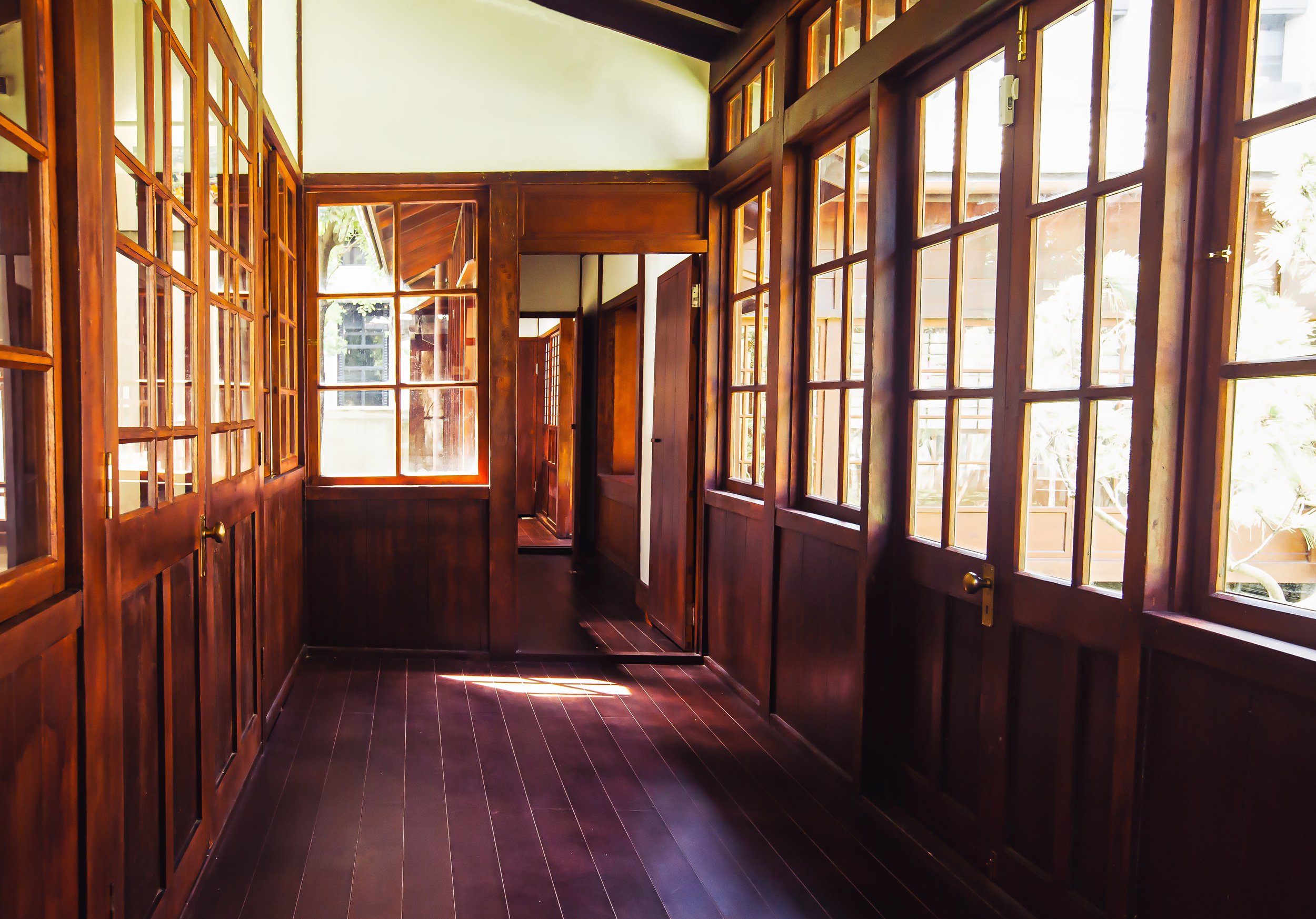Hsinchu has always been one of my favorite places in Taiwan to hang out whenever I’ve got some free time, but in recent months, it has become an even more exciting destination as the city’s Cultural Affairs Department has been working in overdrive - bringing a number of its historic buildings back to life.
Despite Hsinchu is one of the country’s most historic cities, it is also on the cutting edge of science and technology with its massive Science Park, attracting some of Taiwan’s brightest minds, as well as considerable foreign investment. Fortunately, with the amount of development and investment taking place with the city, the local government has recognized that its cultural heritage is equally as important to its future as the microchip.
These days, any trip to the city is an action-packed adventure as each time I go, I’ll check out a number of newly opened historic buildings, and while it may sound like a complaint, I’m probably going to need a dozen more trips over the next few months just to keep up. Fortunately, Hsinchu is also a foodie’s paradise, so I never leave town with an empty stomach.
As far as I’m concerned, all of the work that the city has invested in its history has been simply amazing, and as Hsinchu continues to transform into a hip technology hub, locals and tourists alike are blessed with a number of attractions to visit, where they can celebrate the city’s cultural heritage and its long history.
It’s rare that I sing the praises of the efforts of any of Taiwan’s local governments, but for those of us interested in the preservation of Taiwan’s history, Hsinchu has become a model for how to successfully accomplish these projects while also ensuring that they are managed and marketed in a sustainable way.
Given that I have such a long list of destinations to visit in the city, I had to switch things up a bit when I was notified that the ‘Shinchiku Prefectural Police Commissioner’s Official Residence’ had completed its restoration project, and was in the process of a soft-opening to the public. The building, which is considered one of the ‘highest-ranking’ of the official Japanese-era residences remaining in the city is a special one, but for the purpose of what I do, it had to be moved to the top of my list so that I could get the shots I wanted.
The reason for this is due to the fact that the building will serve a dual-role as a historic tourist attraction in addition to becoming a fine dining restaurant, operated by one of Taiwan’s Michelin recognized chefs.
Essentially, I wanted to take advantage of the soft-opening period to visit and get photos of the building before the restaurant officially opened and the interior space was filled up. Visiting the same day that the soft-opening period officially started, I was fortunate to have the place to myself, and was able to walk around and get all the photos I wanted without being disturbed, which was a pretty great experience.
Suffice to say, today I’ll be introducing one of Hsinchu’s newest tourist attractions, and what I assume will in the near future also become a pretty popular place to enjoy high quality locally-inspired fine dining. Located within the downtown core of the city, the former residence of Shinchiku Prefecture’s Police Commissioner has been beautifully restored, and unlike many of the other Japanese-era residences around the country, this one is arguably one of the most grandest in its architectural design, and the level of comfort awarded to whomever had the luck of living in it.
Given that it is currently still going through it’s soft-opening as I’m writing this, there are very few available resources that go into much detail about its history and architectural design, so I had to visit the National Archives and had to dig deep on this one in order to provide you with as much info as I can.
As always, I highly recommend a visit, and when the restaurant opens, if you’re able to make a reservation, a dinner service there promises to be a pretty cool experience, especially if you’re interested in high-level Taiwanese cuisine.
Shinchiku Prefectural Police Commissioner’s Official Residence (新竹州警務部部長官舍)
Dating back to 1922 (大正11年), the Shinchiku Prefectural Police Commissioner’s Official Residence was constructed in an area of the developing city where a large community of ‘official dorms’ (旭町官舍區) were constructed for the convenience of the civil servants of the era. The community, which was conveniently a short walk from the Hsinchu Railway Station was home to a range of political figures such as the governor of the prefecture, the police commissioner, the city’s mayor, school principals, teachers, etc.
That being said, it was a neighborhood that was largely populated by Japanese nationals, segregating them from most of the native population.
Known officially as Asahichō (旭町 / あさひちょう), the name of the neighborhood was a common one among many of Taiwan’s larger cities during the colonial era where you’d also find one in Taipei, Keelung, Taichung, Tainan and Pingtung. Located just outside of the city’s East Gate (迎曦門), the neighborhood was adjacent to the Hsinchu Moat (護城河), which itself dates back to the Qing rule, and has a pretty interesting history.
These days the moat serves as a popular spot for locals and tourists to enjoy the beauty of the historic city.
The moat essentially acted as a divider between the Asahi neighborhood and the prefectural government, city council and courthouse on one side and the Hsinchu Branch of the Teikoku Sugar Refinery (帝國製糖株式會社新竹糖廠) on the other - the neighborhood would have been a pretty convenient one for its residents as the commute to work was a short one.
Note: The former Sugar Refinery was located on a large plot of land that is currently home to Hsinchu’s largest mall, Big City (遠東巨城購物中心) and the SOGO Department Store.
Before I start to introduce the building, it’s important to first detail a couple of important events that took place prior to its construction, which were essential in determining it’s ‘size’ and ‘architectural design’.
The first major factor came in 1920 (大正9年), when governance of Shinchiku Prefecture (新竹州 / しんちくしゅう) and Taiwan’s other prefectures were restructured by the Governor General’s office. Most notably with regard to this building was that the hierarchy of law enforcement was organized into an advanced structural system that differentiated the jurisdiction and responsibilities of the Prefectural-Level (州設警務部), County-Level (郡設警察課) and City-Level (市設警察署與分署) branches.
For clarity sake, the ‘Shinchiku Prefecture’ of that era consisted of much of what we know today as much of Taoyuan (桃園), Hsinchu (桃園) and Miaoli (苗栗), and the Prefectural Level branch of the police oversaw branches and precincts within Hsinchu City (新竹警察署), Hsinchu County (新竹郡警察課), Chikutō / Zhudong (竹東郡警察課), Tōen / Taoyuan (桃園郡警察課), Chūreki / Zhongli (中壢郡警察課), Daikei / Daxi (大溪郡警察課), Miaoli (苗栗郡警察課), Chikunan / Zhunan (竹南郡警察課) and Taigo / Dahu (大湖郡警察課).
The second major factor that I’d like to highlight was an official policy change that took place the same year as the residence was constructed. In 1922 (大正11年), the Governor General’s Office enacted a law (台灣總督府官舍建築標準) regarding official building standards in Taiwan. These new standards specified a clear set of regulations regarding the size of buildings provided for civil servants of various ranks, which were divided between Senior Officials (高等官 / こうとうかん) and Junior Officials (判任官 / はんにんかん). The new policy was meant to improve the living standards in the housing provided for civil servants in addition to encouraging staff to work hard and move up the ladder in order to receive more comfortable housing.
Under the new housing system, the Police Commissioner’s Official Residence was classified as a Level Two Senior Official (高等官官舍第二種) house, meaning that it was afforded at least 165㎡ (50坪) in size accompanied by a plot of land that was at least 1003㎡ (303.5坪). This made the residence one of the most spacious and comfortable places to live in the neighborhood, second only to the nearby Governor’s Mansion. If you take a look at the maps above where I’ve marked the plot of land where the residence is located, you’ll clearly see the size of the space in comparison to the other dorms in the neighborhood.
Over the years, a number of additions were added to the residence making it larger than how it originally appeared in 1922, with a current total space of 201㎡ (61坪).
Interestingly, even though the residence was provided to a high-level official within the hierarchy of the colonial-era’s civil servants, something I mentioned earlier is important to keep in mind - It was common for these high-level officials to be promoted (or demoted) based on their job performance, so between 1922 and 1945, the building housed well over a dozen families.
I’m listing the various Police Commissioners below, however even though I did my best to romanize their names, it’s possibly that I made a mistake or two, so if you find an error, feel free to let me know!
Shinchiku Prefectural Police Commissioners (新竹州警務部部長) - 1920 - 1941
Tabata Kozburo 田端幸三郎 (1922 - 1923)
Ota Goichi 太田吾一 (1923-1925)
Tsunoda Hiroshi 角田廣次 (1925 - 1926)
Kusano Yoshikazu 草野義一 (1926 - 1927)
Takahashi Hideto 高橋秀人 (1927 - 1928)
Osatake Ken 尾佐竹堅 (1928 - 1930)
Ishikawa Sadatoshi 石川定俊 (1930 - 1931)
Suzuki Hideo 鈴木秀夫 (1931 - 1932)
Keiya Takao 慶谷隆夫 (1932 - 1934)
Takahara Hayato 高原逸人 (1934 - 1937)
Raku Mitsuru 樂滿金次 (1937 - 1939)
Nei Ko 根井洸 (1939 - 1940)
Shirani Hoichi 白仁寶一 (1940 - 1941)
Shinchiku Prefecture Police Chief (新竹州警察部部長) - 1941 - 1945
Shirani Hoichi 白仁寶一 (1941 - 1942)
Shibayama Minenoburu 柴山峯登 (1942 - 1943)
Ihara Toshiyuku 井原敏之 (1943 - 1945)
When Taiwan’s Colonial Era ended with the surrender of the Japanese Empire at the conclusion of the Second World War, the residence continued to be occupied by Hsinchu Police Chiefs (警察局長) for a number of years, but the household registration records for the first few years after the Chinese Nationalist takeover aren’t recorded (or published) very well, which likely means that it was possibly also occupied by refugees who stayed there until the government was able to provide alternative housing for them.
From what little information is available, in the period between 1945 and 1993, there were at least three different police chiefs housed within the residence. The first was Lee Shu-yu (李樹鈺), second Huang Ding-can (黃丁燦) and third Lin Mao-sheng (林茂生), all three of whom were the Police Commissioner for Hsinchu County (新竹縣警察局局長).
Officially registered as a Hsinchu City Historic Site (市定古蹟) in 2016 (民國105年) and a on March 18th, 2022 (民國111年), restoration on the building was officially completed with the government investing NT$33,800,000 (US$1,500,000).
Architectural Design
There are a few issues that need to be kept in mind before I start describing the building as it appears today - First, and most importantly, the original blueprints have been lost. Given that blueprints are often one of the best tools for those involved in the restoration of these buildings (to remain faithful to the original design), it’s unfortunate that were unavailable. Further complicating the restoration process, the interior space of the residence was considerably altered over the post-war period by its various occupants, who changed the space to better fit their individual needs.
The restoration of the building ultimately required a significant amount of research and comparison with similarly designed senior-level residences from the Taisho era. Suffice to say, the restoration team took a conservative approach to their work, when we look at current blueprints, what would have been the main living space during the Japanese-era had been altered to a point that they could only leave it as it was.
Despite these issues, the basics of the building’s architectural design are pretty clear, it is a spacious 201㎡ (61坪) Japanese-style timber-framed (軸組式) building constructed in the irimoya-zukuri (入母屋造) style.
What this means is that the building was constructed on an elevated base, known as the ‘moya’ (母屋), which is smaller than the four-sided sloped hip roof (四坡頂) above. To support the weight of the larger roof, the building features an ingeniously designed network of timber trusses and pillars within the interior, further stabilized by a network of cement pillars on the base that elevates the building above the ground.
The roof design is known as a ‘yosemune-zukuri’ (寄棟造 / よせむねづくり), which as mentioned above is noted by its four-sided sloping faces and was originally covered with decorative Kyoto-style black roof tiles (黑瓦). As time passed however, the original roof tiles were replaced due to damage caused by age (and a century of typhoons). Prior to restoration the building was covered in red plasticky tiles, but they have been removed and replaced again with Japanese-style stone tiles, which are nice, but are just a little too new-looking to be all that impressive.
Even though the architectural design of the residence can be considered a fusion of traditional Japanese and western architectural design (和洋並置), it keeps with tradition with the interior space divided into three separate spaces, a living space (起居空間), a service space (服務空間) and a passage space (通行空間).
To explain each of these spaces, the “living space” is considerably different than what we’re accustomed to in western countries as what we might refer to as a “living room” is actually a brilliant multi-functional space where the family spends time together having meals, drinking tea and sleeping. Additionally, these spaces often include tea rooms, dining rooms, guest rooms and so on, depending on the size of the house.
The “service space” on the other hand includes a number of functional spaces including the kitchen (台所 / だいどころ), bathroom (風呂 / ふろ), washroom (便所 / べんじょ), etc.
Finally, the “passage space” generally refers to the various entrances and the corridors within the house.
Within traditional Japanese-style residences like this, the fusion of all three of these spaces skillfully separates the ‘public’ parts of the home from the ‘private’ through the usage of walls, sliding doors and corridors that reach around the building. When it comes to the separation between the space used for guests and the space used for the family, the Police Commissioner’s residence is quite special in its architectural design, especially when you compare it to the nearby Former Residence of Hsin Chih-Ping (辛志平校長故居), which was the residence provided for the Principal of Shinchiku High School (新竹州立新竹中學校), and a senior-level residence itself.
The Principal’s residence, which is relatively smaller (159.87㎡ vs. 201㎡), features a room for entertaining guests directly to the right of the main entrance of the home, but is a short distance from the private living space. With the additional space provided in the Police Commissioner’s residence, there are some key design differences regarding interior space, especially with regard to the space for entertaining guests.
The building features several entrances, but guests would have been greeted at an alternate entrance to the left of the main doors where there is a special ‘tea-room’ connected to a long and beautiful corridor, which also connects to a spacious western-style dining room. This type of ‘detached’ space is somewhat rare among Taiwan’s remaining Japanese-era residences today, and this one is made even more special by the fact that it also features a bathroom that guests could use while visiting, something that was also quite uncommon for buildings that date back over a century.
Looking at the top-down blueprints of the house below, the guest space on the left makes the shape of the building appear different from many of its contemporaries, but its all about functionality, and providing space for a senior-level official who would have been required to entertain guests from time to time.
Using the floor plan above, I’ll briefly introduce each of the various spaces within the residence to better explain their function based on the space they belong. I’ve included numbers on the image so that it’ll be easier to understand. Before I start though, it’s important to note once again that there is debate as to the original usage for some of the spaces within the house given that the interior space was altered significantly over the post-war period. I’ll note which of these spaces are questionable, but given my research and experience with these buildings, in some cases it is easy to assume what might have been there.
Passage Space (通行空間)
1. The front entrance, or the foyer to the residence is known as a ‘genkan’ (玄關 / げんかん), and features compartments for shoes, umbrellas, etc. The foyer is almost always the only ‘ground level’ section of the house as the rest is elevated on pedestals. There are two of these foyer’s in this house including a grand entrance used by the family and a smaller one to the left that led directly to the guest space.
2. One of my personal favorite spaces within these historic Japanese-era buildings are the beautiful ‘engawa’ (緣側/えんがわ) sliding door verandas. An essential aspect of traditional Japanese architectural design, most of the historic residences in Taiwan will feature at least one engawa that faces the back yard or garden, but in this residence there are actually three of them - one in the living space, one near the dining space, and another in the connected guest space. The sliding glass panels in the living space are the longest and most impressive of the three as it provides an excellent view of the garden space as well as providing for a significant amount of natural air to enter the building through the sliding doors and windows.
3. Within the building you’ll find a number of corridors that connect each of the spaces to each other. I haven’t listed each of them on the photo above, but the ‘rou’ (廊 / ろう) are essential in these buildings as they play an integral part in separating each of the spaces.
Living Space (起居空間)
4. When you walk up the stairs from the foyer, it was likely that you’d find a ‘waiting room’ or a ‘machiaishitsu’ (待合室 / まちあいしつ), however this is one area of the house where the space has been altered quite a bit, making it questionable as to whether it was a reception room or not. Today it is used for the administration of the building and the restaurant that will operate within.
5. To the right of (what was possibly) the reception room/waiting room, it is likewise thought that there was either a tea room (茶之間 / ちゃのま), a less formal dining space, or a reading room (書齋 / しょさい), which could have also served as a work space. As is the case with the space above, it’s unclear, but the guest space would have served both purposes as well.
Given how close it is to the kitchen, I’d argue that it was likely a dining space.
6. Within the private family area section, you’ll find the most spacious area of the home, which is typically separated into two sections. The living space, known as the ‘zashiki’ (座敷 / ざしき). As I mentioned above, this is where the typical ‘living room’ that westerners are familiar with differs as this space is essentially a mixture of a space where the family could spend time together. Within this space you’d find an alcove referred to as tokonoma (床の間/とこのま) and a chigaidana (違棚 / ちがいだな), which are both spaces reserved for decorative elements of the living space.
7. The second part of the spacious living space is reserved for the family’s sleeping space, known as the ‘ima’ (居間 / いま), which like the space above is essentially just an open space. Within this space you’d find alcoves known as ‘oshiire’ (押入 / おしいれ), which are used for storing bedding during the day.
8. As mentioned earlier, with the exception of the family’s private living space, the ‘ousetsushitsu’ or guest space (應接室 / おうせつしつ) features quite prominently in this residence as it is connected directly to the private area and the alternate entrance to the house. In terms of architectural design, it is one of the most impressive of these specific spaces that I’ve seen in any of the historic Japanese-era houses that remain in Taiwan today. The square room features four walls that consist almost entirely of windows, allowing for a significant amount of natural light and with three doors, and access to a bathroom specifically for guests, it was likely an excellent spot for entertaining friends and colleagues.
9. The last section of the living space is the space that was made available for the housekeeping staff that would have been afforded to the family. The Maid’s Room (女中室 / じょちゅうしつ) is currently one of the spaces where there is some debate as the space was likely knocked down at some point in order to enlarge the kitchen space.
10. Given the irregular shape of the residence, one of the biggest questions with regard to the original usage of certain spaces is when it comes to the space on the western side of the house where you’ll find an engawa sliding veranda, a lavatory, and a tokonoma space, like the one mentioned above in the living room. While it is debatable whether or not this space could have served as a spare bedroom, I’d venture to guess that it was likely a reading room (書齋 / しょさい), which served as an elegant home office space for the commissioner. As a space that was separate from the private area of the house, colleagues could have come and gone quite easily and the space could have also been used for less formal meetings that didn’t require the large space in the guest room. Today the space is a beautiful room with tatami floors where you can sit and learn about the history of the area, offering a beautiful view of the exterior of the building.
Service Space (服務空間)
On the eastern side of the residence you’ll find the three rooms which are considered part of the ‘service space, namely the (11) lavatory (便所 / べんじょ), the (12) kitchen (台所 / だいどころ) and the (12) bathroom (風呂 / ふろ). However, given the changes to the building over the years and the recent restoration of the building, there isn’t much to say about these spaces. The former kitchen for example is currently an open space that is used to display historic information and anything that would have identified it as a kitchen has been removed. Similarly, the former shower room is currently closed off to the public and the space used for the lavatory has been completely removed as the space currently opens to a newly constructed exit to a newly constructed building on the exterior where the restaurant’s kitchen is located.
No. 132 Food Theater Restaurant (132糧倉)
With restoration of the century-old residence completed in early 2022, the historic residence was officially re-opened by the Mayor of Hsinchu on May 24th with plans to have it become another one of the city’s historic tourist destinations as well as a food lovers paradise.
Link: 百年古蹟新竹州警務部部長官舍修復完工 24日起開放 (UDN 聯合)
With operational control of the building split between the Hsinchu Bureau of Cultural Affairs (新竹文化局) and the No.132 Food Theater Restaurant (132糧倉). The historic building will feature rotating exhibits that highlights local history while also becoming home to the newest restaurant from Chef Josh Wang (王正岳), one of the famed chefs from Taipei’s Michelin-starred restaurant RAW, and the owner of the Bib Gourmand-awarded restaurant “No. 1 Food Theater” (一號糧倉).
Link: Behind The Bib: No.1 Food Theater Cuisine In Taipei (Michelin Guide)
As this article is being published prior to the restaurant’s grand-opening, I can only speak to the set menu that was placed on some of the tables in the building during my visit. Chef Wang is known for his fine-dining skills, but his ‘No. 1 Food Theater’ in Taipei offers a very affordable Taiwanese fusion experience mixing local ingredients and recipes with popular western dishes. With this new restaurant, Chef Wang’s menu is inspired by the traditional cuisine of Hsinchu and will featured locally produced farm to table ingredients.
In partnership with the local government, the building will be operated with a mixture of public and private sector cooperation that has become a formula in recent years for ensuring that buildings like this can continue to be restored across the country.
If you’re interested in the topic, I recommend you check out my article where I outline the government’s efforts to preserve historic buildings while taking advantage of private sector partnerships to ensure sustainability.
Link: The role of Public-Private Partnerships in Conserving Historic Buildings in Taiwan
Interestingly, this is Chef Wang’s second restaurant located within a historic Japanese-era building as the ‘No 1 Food Theater’ mentioned above is located within a historic warehouse in Taipei’s Songshan District (松山區) that was restored a few years back. Receiving a Bib Gourmand award, the restaurant offers diners an affordable dining experience with meals under NT$1000. This new restaurant in Hsinchu however will focus on providing more of a fine dining experience with the set menu priced at $NT1980 per diner.
Link: 新竹州警務部部長官舍/132糧倉 (Facebook)
Restaurant’s hours: Tuesday - Sunday from 6:00pm - 9:00pm
Tourist visitation hours: Tuesday - Sunday from 10:00am - 6:00pm.
Getting There
Address: #132 Zhongyang Road, Hsinchu City (新竹市中央路132號)
GPS: 24.806960, 120.971200
Located in the downtown core of Hsinchu City, the former Police Commissioner’s residence is within walking distance from the Hsinchu Train Station, so if you’re in the area for a day-trip and you’re walking around, the residence is yet another of the city’s historic attractions that you’ll be able to enjoy. Essentially less than a block away (in any direction) from Hsinchu’s East gate (竹塹城迎曦門), the Hsinchu Principal’s Residence (辛志平校長故居), the City God Temple (新竹城隍廟), Dongmen Market (東門市場) and the Big City Shopping Mall (遠東巨成購物中心), visitors have a number of options within walking distance from the train station.
And that list doesn’t include any of the restaurants and coffee shops that you’ll encounter along the way.
If you’re in Hsinchu and you’re driving a car or scooter, you should be able to find parking near the Hsinchu Moat Park (護城河親水公園), where there is street-side parking available for scooters and a paid parking garage for cars. Each of the destinations mentioned above is a short walk from there. However, if you discover that the parking lot is full, never fear, there are a number of options within the area. I recommend inputting the address provided above into your GPS or Google Maps and you’ll find a number of spaces nearby.
While I can’t recommend enough that you walk around the city, some of you are might be more comfortable making use of public transportation. Fortunately there is a bus stop a short walk away from the residence, so you’re in luck. You’ll be able to hop on the following buses to get to the residence, which is located next to the Qinren Village Bus Stop (親仁里站):
Hsinchu Bus #2 (新竹客運) - Hsinchu Train Station - Chiao Tung University
Hsinchu Bus #31 (新竹客運) - Hsinchu Train Station - Science Park
Hsinchu Bus #5602 (新竹客運) - Hsinchu - Sanfeng
Hsinchu Bus #5603 (新竹客運) - Hsinchu - Xincheng
Hsinchu Bus Blue Line (新竹客運藍線) - Hsinchu Fisher Association - Hsinchu Junior High
Miaoli Bus Green Line (苗栗客運綠線) - Chingkuo Road - Xiangshan)
If you take the bus from the train station to the residence, I still recommend that from there you visit some of the other enjoyable destinations in the area. The city is very walkable and along the way to your next destination, you’re likely to find something else that interests you.
As mentioned above, I’m publishing this article quite early after the restoration of the residence was completed during the period when the restaurant that will occupy the space was still making preparations for its grand opening. Given that operational control of the historic building has been awarded to a Michelin-rated chef, I’m not particularly sure how long the building will remain open for tourists, but it seems like time will be split pretty evenly with it being available for visits during the day and closing in time to prepare for dinner service. If you have a chance to enjoy a meal at the restaurant, be sure to let me know how it went!
I’ve added it to my list of places to eat in the city!
References
Shinchiku Prefecture | 新竹州 (Wiki)
新竹縣政府警察局 (Wiki)
新竹州警務部部長官舍 (新竹文化局)
新竹州警務部部長官舍 (國家文化資產網)
「新竹州警務部部長官舍」開放!百年日式古蹟重生,米其林必比登推薦「一號糧倉」進駐 (Shopping Design)
「新竹州警務部部長官舍」開放!132糧倉結合在地食材的美食饗宴 (La Vie)
複合式古蹟「新竹州警務部部長官舍」今開放 (UDN)
百歲古蹟重生 新竹州警務部部長官舍重新開館 (台灣生活網)
「新竹州警務部部長官舍」開幕 來百年官邸吃必比登美食 (中時新聞網)
台灣日式建築:官舍 —— 台灣樣.建築百科 (財團法人空間母語文化藝術基金會)
新竹市定古蹟警長高等官舍 獲3200萬元修復活化 (自由時報)



